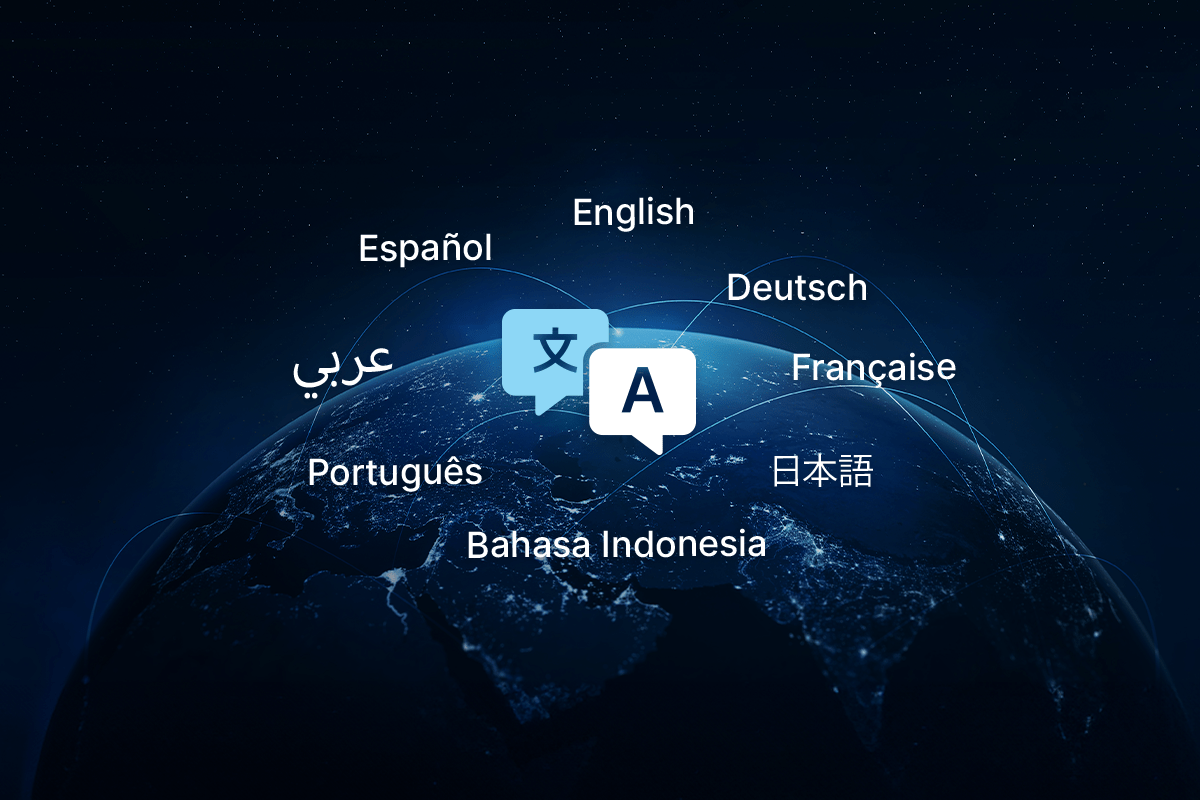AI is already having a dramatic impact on various kinds of work, in places like contact centers, marketing agencies, research outfits, etc.
In this piece, we’re going to take a closer look at one specific arena where people are trying things (and always learning), and that’s AI translation. We’re going to look at how AI systems can help in translation tasks, and how that is helping companies build their global brands.
What is AI Translation?
AI translation, or “machine” translation as it’s also known, is more or less what it sounds like: the use of algorithms, computers, or software to translate from one natural language to another.
The chances are pretty good you’ve used AI translation in one form or another already. If you’ve ever relied on Google Translate to double-check your conjugation of a Spanish verb or to read the lyrics of the latest K-pop sensation in English, you know what it can accomplish.
But the mechanics and history of this technology are equally fascinating, and we’ll cover those now.
How Does AI Translation Work?
There are a few different approaches to AI translation, which broadly fall into three categories.
The first is known as rule-based machine translation, and it works by drawing on the linguistic structure that scaffolds all language. If you have any bad memories of trying to memorize Latin inflections or French grammatical rules, you’ll be more than familiar with these structures, but you may not know that they can also be used to build powerful, flexible AI translation systems.
Three ingredients are required to make rule-based machine translation function: a set of rules describing how the input language works, a set of rules describing how the output language works, and dictionaries translating words between the input and output languages.
It’s probably not hard to puzzle out the major difficulty with rule-based machine translation: it demands a great deal of human time and attention and is therefore very difficult to scale.
The second approach is known as statistical machine translation. Unlike rule-based machine translation, statistical machine translation tends to focus on higher-level groupings, known as “phrases”. Statistical models of the relevant languages are built through an analysis of two kinds of data: bilingual corpora containing both the input and output language, and monolingual corpora in the output language. Once these models have been developed, they can be used to automatically translate between the language pairs.
Finally, there’s neural machine translation. This is the most recently developed AI translation method, and it relies on deep neural networks trained to predict sequences of tokens. Neural machine translation rapidly supplanted statistical methods owing to its remarkable performance, but there can be edge cases where statistical translations do better. As is usually the case, of course, there are also hybrid systems that use both neural and statistical machine translation.
Building a Global Brand with AI
There are many ways in which the emerging technology of artificial intelligence can be used to build a global brand. In this section, we’ll walk through a few examples.
How can AI Translation Be Used to Build a Global Brand?
The first way AI translation can be used for building a global brand is that it helps with internal communications. If you have an international workforce – programmers in Eastern Europe, for example, or support staff in the Phillippines – keeping them all on the same page is even more important than usual. Coordinating your internal teams is hard enough when they’re all in the same building, to say nothing of when they’re spread out across the globe, over multiple time zones and multiple cultures.
The last thing you need is mistakes occurring because of a bad translation from English into their native languages, so getting high-quality AI translations is crucial for the internal cohesion required for building your global brand.
Of course, more or less the exact same case can be made for external communication. It would be awfully difficult to build a global brand that doesn’t routinely communicate with the public, through advertisements, various kinds of content or media, etc. And if the brand is global, most, or perhaps all, of this content will need to be translated somewhere along the way.
There are human beings who can handle this work, but with the rising sophistication of AI translators, it’s becoming possible to automate substantial parts of it. Besides the obvious cost savings, there are other benefits to AI translation. For one thing, AI is increasingly able to translate into what are called “low-resource” languages, i.e. languages for which there isn’t much training material and only small populations of native speakers. If AI is eventually able to translate for these populations, it could open up whole new markets that weren’t reachable before.
For another, it may soon be possible to do dynamic, on-the-fly translations of brand material. We’re not aware of any system that can 1) identify a person’s native language from snippets of their speech or other identifying features, and 2) instantly produce a translation of i.e. a billboard or poster in real-time, but it’s not at all beyond our imagination. If no one has built something that can do this yet, they surely will before too long.
Prompt Engineering for Building a Global Brand
One thing we haven’t touched on much so far is how generative AI will impact marketing. Generative AI is already being used to create drafts of web copy, mockups of new designs for buildings, products, and clothing, translating between languages, and much else besides.
This leads naturally to a discussion of prompt engineering, which refers to the careful sculpting of the linguistic instructions that are given to large generative AI models. These models are enormously complex artifacts whose inner workings are largely mysterious and whose outputs are hard to predict in advance. Skilled prompt engineers have put in the time required to develop a sense for how to phrase instructions just so, and they’re able to get remarkably high-quality output with much less effort than the rest of us.
If you’re thinking about using generative AI in building your global brand you’ll almost certainly need to be thinking prompt engineering, so be sure to check out Quiq’s blog for more in-depth discussions of this and related subjects.
How can AI Translation Benefit the Economy?
Throughout this piece, we’ve discussed various means by which AI translation can help build global brands. But you might still want to see some hard evidence of the economic benefits of machine translation.
Economists Erik Brynjolfsson, Xiang Hui, and Meng Liu conducted a study of how AI translation has actually impacted trade on an e-commerce platform. They found that “… the introduction of a machine translation system…had a significant effect on international trade on this platform, increasing export quantity by 17.5%.”
More specifically, they found evidence of “…a substantial reduction in buyers’ translation-related search costs due to the introduction of this system.” On the whole, their efforts support the conclusion that “… language barriers significantly hinder trade and that AI has already substantially improved overall economic efficiency.”
Though this is only one particular study on one particular mechanism, it’s not hard to see how it can apply more broadly. If more people can read your marketing material, it stands to reason that more people will buy your product, for example.
AI Translation and Global Brands
Global brands face many unique challenges: complex supply chains, distributed workforces, and the bewildering diversity of human language.
This last challenge is something that AI language translation can help with, as it’s already proving useful in boosting trade and exchange by reducing the friction involved in translation.
If you want to build a global brand and are keen to use conversational AI to do it, check out the Quiq platform. Our services include a variety of agent-facing and customer-facing tools, and make it easy to automate question-answering tasks, follow-ups with clients, and many other kinds of work involved in running a contact center. Schedule a demo with us today to see how we can help you build your brand!




